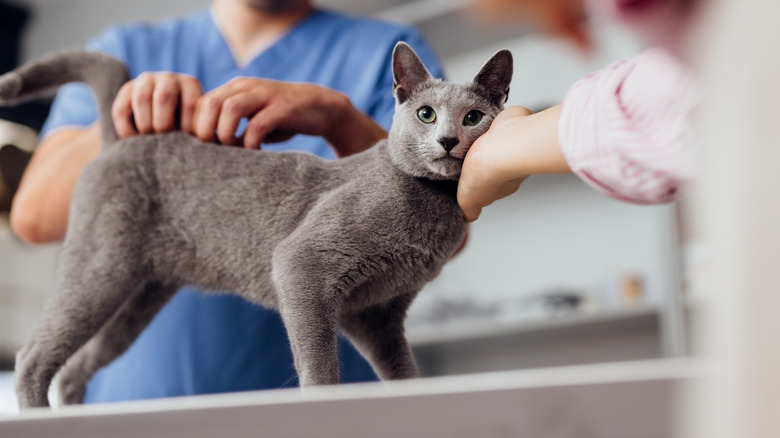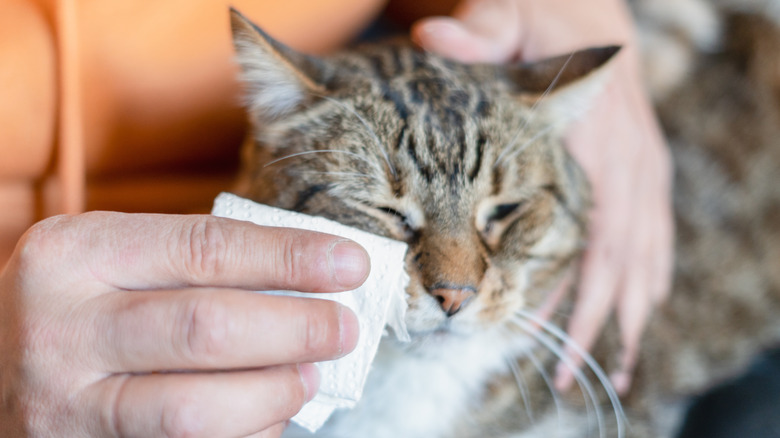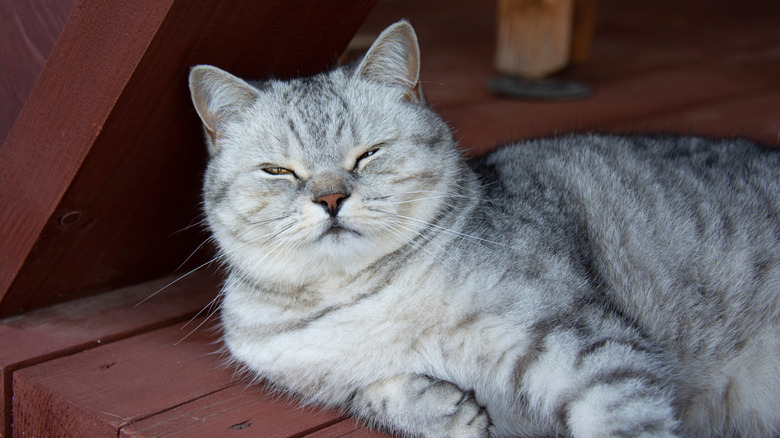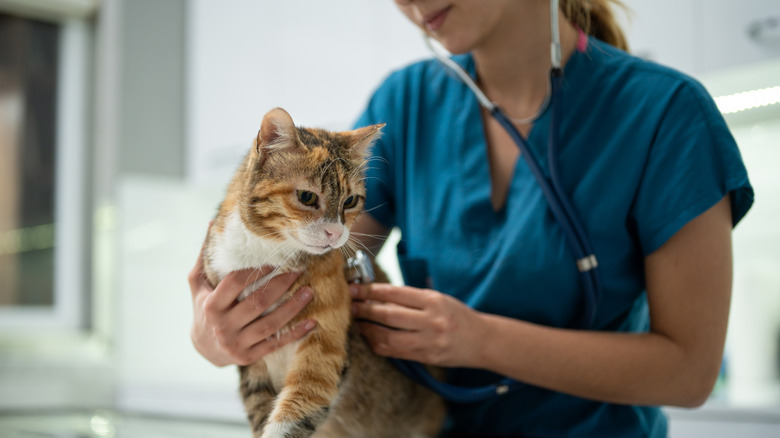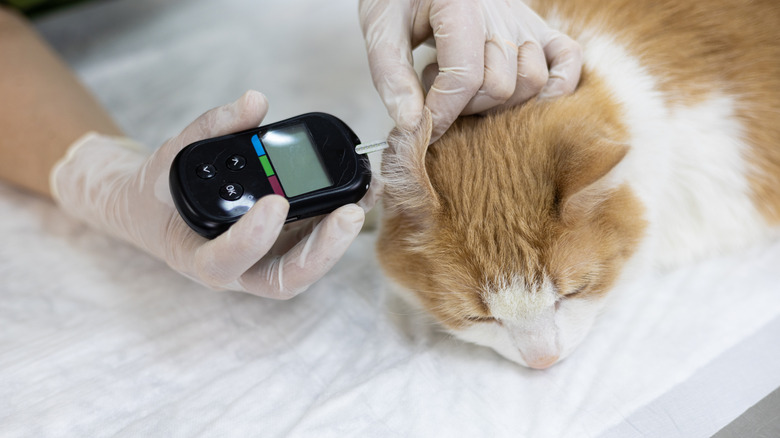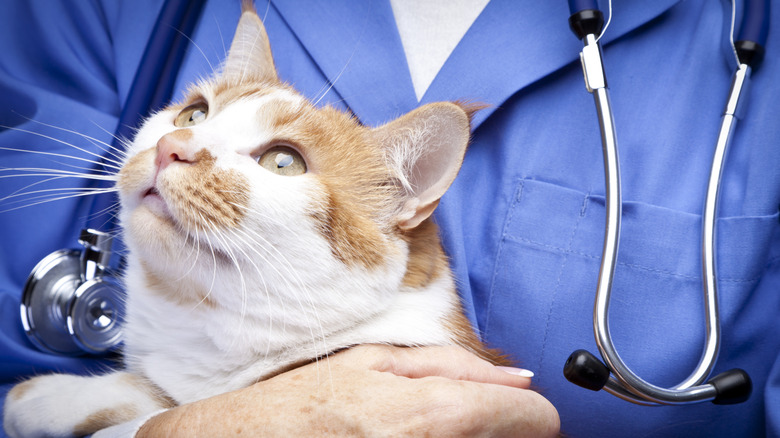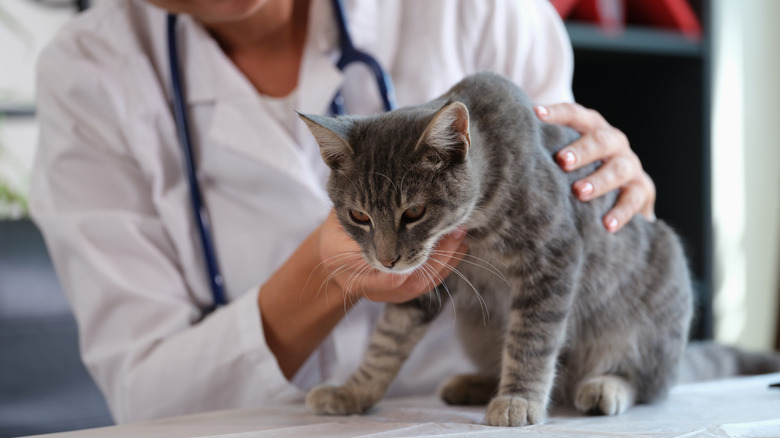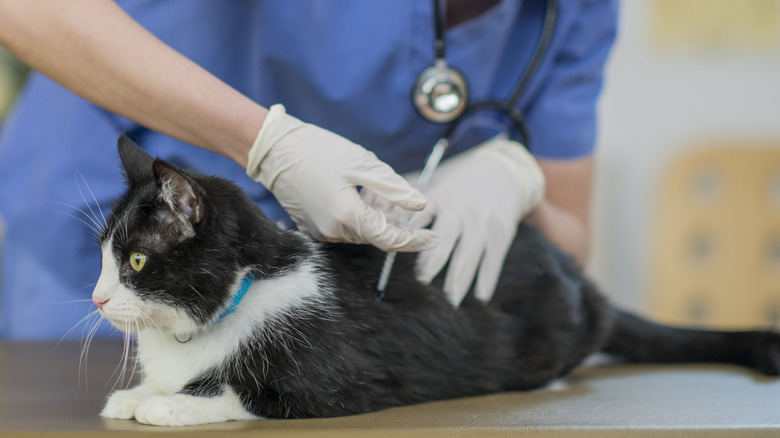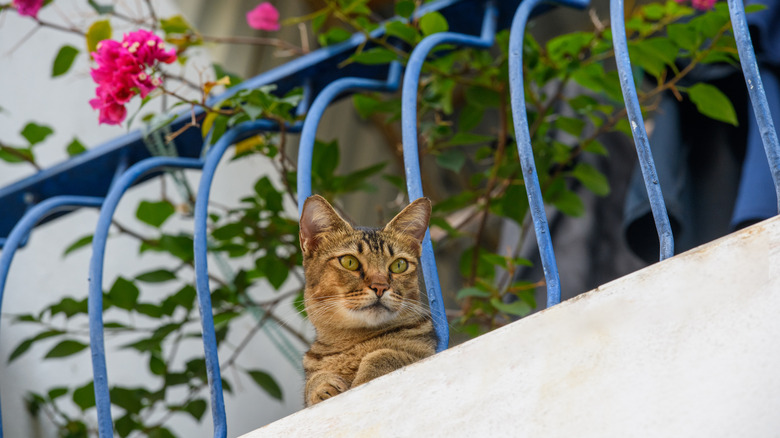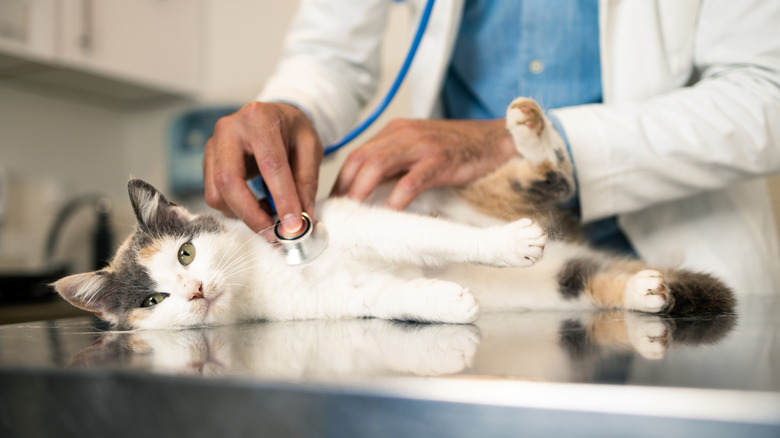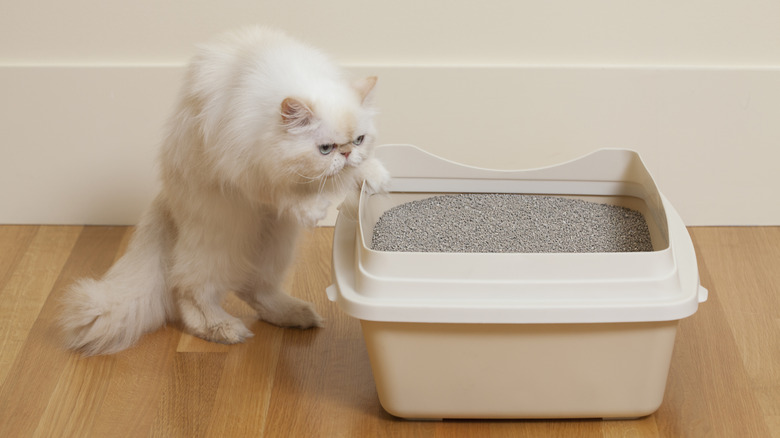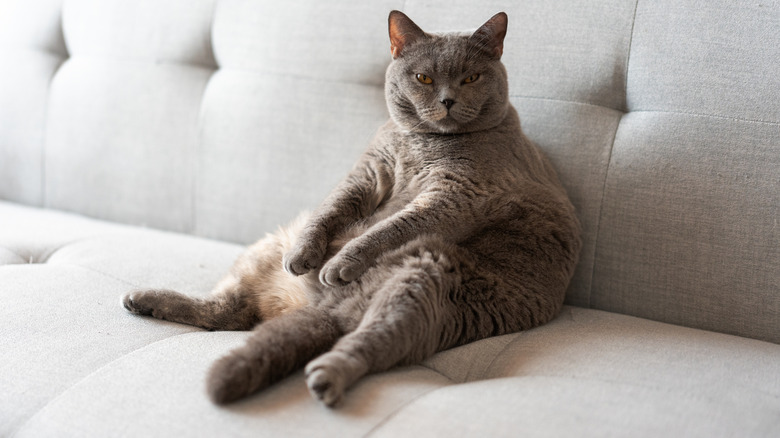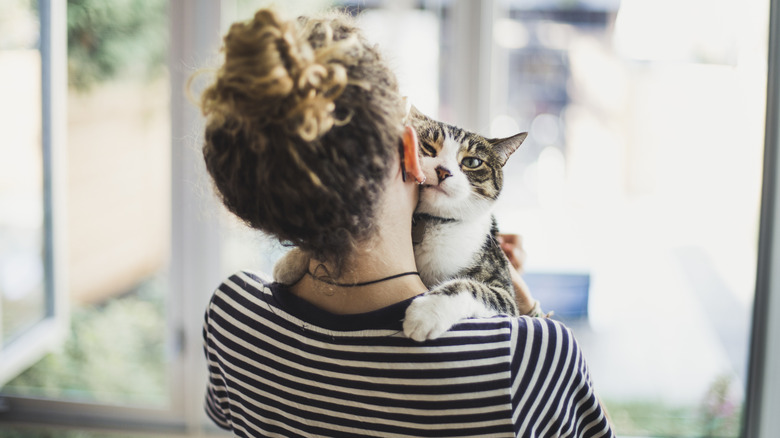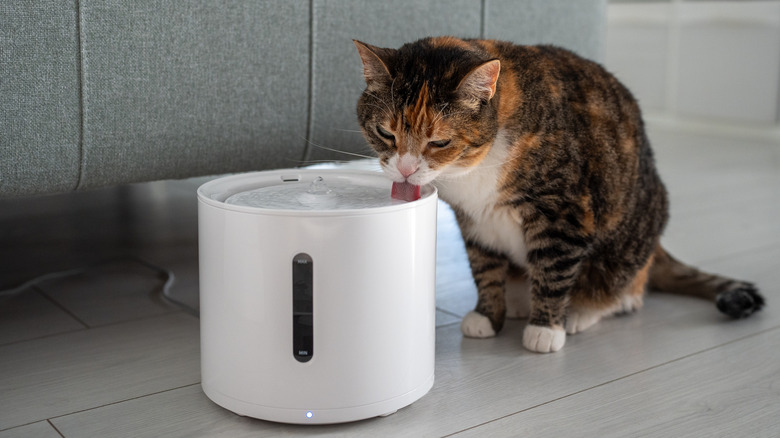Common Cat Illnesses - What They Look Like And How Vets Diagnose And Treat Them
Everyone's heard the saying, "Cats have nine lives." However, our feline friends are more susceptible to health concerns than many people think. Upper respiratory infections, diabetes, and certain types of cancer can seriously hinder a cat's quality of life. There are also external factors, such as parasites, falls from heights, and dietary habits that can affect feline health.
While some common cat illnesses are genetic or unavoidable, you can ensure your pet has access to treatment and preventative care through routine veterinary checkups. Different food, certain medications, and some physical therapy can go a long way. Your vet may even suggest getting another cat if your feline friend lives with a condition like separation anxiety.
If you notice anything awry about your cat, whether it's sudden personality changes or weight fluctuations, trust your instincts and seek medical attention. You know your pet better than anyone! That said, you can plan ahead by familiarizing yourself with the most common illnesses that affect cats, along with how veterinarians assess symptoms and render diagnoses.
Many cats develop feline upper respiratory infections
Feline upper respiratory infections (FURIs) can present a host of tell-tale symptoms, such as coughing, sneezing, and nasal discharge. Other signs include fatigue, loss of appetite, and lethargy, per the Humane Society of the United States (pdf). Note that FURIs extend well beyond a cold and instead refer to different strains of viruses and bacteria that affect the throat, nose, and sinuses. The likelihood of a cat contracting a FURI depends on the type of infection. For example, Cornell School of Veterinary Medicine shares that nearly 97% of cats are exposed to feline herpes virus, resulting in a lifelong infection for 80% of cats. Meanwhile, around 10% of cats in small groups develop feline calicivirus, a contagious and common virus that can lead to pneumonia.
A veterinarian will usually diagnose this condition by running some tests. For instance, they may draw blood to measure the cat's electrolytes or swab the inside of their mouth and send the sample away for testing. While FURIs resemble a cold on the surface, if left untreated, they could worsen into other life-threatening conditions. Veterinarians may prescribe doxycycline or amoxicillin, two first-line defenses against bacterial and viral infections, probiotics and supplements, or nasal decongestants depending on the type of FURI present.
Conjunctivitis is a common eye condition in cats
Conjunctivitis refers to an inflammation of a cat's conjunctiva, the thin membrane that coats the eye and lines the inner eyelid. Cornell School of Veterinary Medicine shares that most cats will develop this common condition "at some point in their lives." It typically happens as a result of the immune system's response to bacteria and viruses, causing eye discharge in cats, redness, and squinting. Feline herpesvirus (FHV-1), which affects the upper respiratory tract and eye structures, is the most common cause of conjunctivitis, according to DVM360.
Cats can get this condition from other cats and contaminated surfaces. It's most likely to affect young cats and cats living in multi-pet households. The condition can subside on its own without treatment, yet, owners should never take risks with their pets' health. A veterinarian has several options for diagnosing conjunctivitis in cats. For example, they may stain the reddened eye with fluorescein dye, and in the absence of noticing corneal injuries, diagnose conjunctivitis. They may also examine the cat's tear production and pressure inside the eyes. Many cat owners will be pleased to learn that conjunctivitis generally isn't serious and can be treated with antibiotics or steroids, though non-infectious cases can recur if the underlying cause isn't addressed.
Lymphoma is the most common cat cancer
Lymphoma in cats is both one of the most common illnesses felines face and one of the most fatal. This malignant cancer affects the cat's lymphatic system, an intricate network of tissues and organs. The most common type is intestinal lymphoma, which affects the gastrointestinal tract. VCA Animal Hospitals notes that it makes up 50 to 70% of feline lymphoma diagnosis. Depending on a cat's response to treatment, they can go into remission for anywhere from a few months to a couple of years. Every cat can develop lymphoma, but those especially at risk include unvaccinated felines that come into contact with those diagnosed or infected with FIV or FeLV.
Symptoms of lymphoma depend on the type of feline cancer. They generally include vomiting, enlarged masses around the neck, and weight loss, per Cornell University's College of Veterinary Medicine. A veterinarian will diagnose lymphoma using the data from multiple tests, including tissue biopsies and bloodwork. A common course of treatment is chemotherapy, and a veterinary oncologist will decide how often your cat should receive it. If your feline is older or wouldn't benefit from chemotherapy, your vet may prescribe prednisolone, a type of steroid.
Diabetes could arise from insulin deficiencies
Every cat needs sugar, which comes in the form of glucose. However, for the body's cells to get glucose, they must be accessed by insulin, a hormone that's produced by the pancreas. Essentially, glucose and insulin work hand-in-hand to ensure that vital bodily systems get the energy they need to function. Yet, for whatever reason, the body may not make enough insulin (Type I diabetes), or the cells have problems responding to the insulin (Type II diabetes).
Cats with diabetes may experience weight loss; because the body can't properly get fuel from cells, it may burn fat or protein. Owners may notice weight loss either at the vet or by observation, in addition to excessive thirst and urination in their cats. It's estimated that 0.2 to 1% of cats will be diagnosed with diabetes, with overweight cats having their risk increase fourfold, Cornell College of Veterinary Medicine explains.
Your pet's medical team may diagnose the condition via a fructosamine concentration test, which measures your cat's glucose levels over the previous two weeks. Diabetes is manageable with a consistent and well-informed care plan. Your veterinarian may recommend giving your cat subcutaneous insulin shots once every 12 hours to regulate their hormone levels.
Feline immunodeficiency virus: treatable but serious
Cornell College of Veterinary Medicine notes that feline immunodeficiency virus (FIV) is considered one of the most infectious and deadliest diseases for cats. It's generally spreads from cat to cat through bite wounds. FIV weakens a cat's immune system, leaving the body open to infections and other diseases that can prove fatal. About 2.5 to 5% of felines test positive for FIV, with intact, free-roaming males the most at risk.
FIV may not show symptoms for months or even years after the initial infection. What's more, many of these signs, including weight loss, lethargy, and chronic diarrhea, resemble other common illnesses initially. A cat may also have swollen glands or continuously get sick. Because many cats with FIV appear normal, lots of owners don't find out their cats have FIV until years after the initial contraction.
A veterinarian may run multiple tests and use their findings to diagnose FIV. One such test involves measuring the antibodies that the body created to fight the virus. Unfortunately, there is no cure for FIV. Treatment plans generally revolve around managing secondary symptoms, which may include dietary changes and being spayed/neutered. The prognosis for cats with FIV is on a case-by-case basis. Felines can live for multiple years with this condition, experiencing little interruption to their daily lives. Others may chronically experience medical problems.
Feline leukemia virus (FeIV) is a common infectious disease
Don't let the word "leukemia" fool you; feline leukemia virus (FeIV) isn't a type of cancer. Rather, it's one of the most common causes of cancer, as it lowers a cat's immune system and can even lead to blood disorders. FeIV is a retrovirus, meaning that it can incorporate itself into a cat's genome and create copies of itself. It's spread between cats through bite wounds, mutual grooming, and food sources. Kittens are the most at risk because of their still-developing immune systems.
According to the Cornell College of Veterinary Medicine, FeIV impacts 2 to 3% of cats in the United States and Canada. Of the cats exposed to FeIV, 30 to 40% will contract progressive FeIV, which is considered the worst prognosis. The virus infects the bone marrow and lowers the cat's immune system, leaving the body vulnerable to cancer and other life-threatening ailments.
Symptoms of FeIV can include weight loss, light-colored gums, and diarrhea. There isn't one single test that can determine FeIV; a veterinarian will run multiple panels and screenings to diagnose the condition. There is no cure for FeIV, and like FIV, treatment focuses on managing secondary symptoms, which may include medications and palliative care.
Roundworms affect most cats at some point
Anywhere from 25 to 75% of cats will contract roundworms, Cornell College of Veterinary Medicine explains. These intestinal parasites generally measure three to five inches long. Kittens generally contract roundworms through their placenta or while nursing, and adult cats can contract these parasites through exposure to fecal matter with roundworm eggs. While roundworms on their own aren't fatal, they can deprive a cat's body of vital nutrients, leading to lethargy, weight loss, and a dull coat. In extreme cases, roundworms can migrate to the lungs and cause coughing.
If you suspect roundworms, you should bring your cat to the vet as soon as possible. They will likely diagnose roundworms by examining a stool sample, placing it under a microscope, and looking for eggs. You may also see roundworms in your cat's vomit or stool. Great news: while roundworm infestations are common in cats, the condition is very treatable. Fenbendazole is among one of the most popular treatments for parasites in cats. It comes as a liquid or oral granules.
Rabies is 100% fatal without vaccination
Merck Veterinary Manual reports that cats are the most reported rabid domestic animal. Cases involving rabies-infected cats have outnumbered those involving dogs every year since 1990. Rabies is a viral infection that targets the nervous system. Upon making a diagnosis, a veterinarian has no choice but to euthanize the animal. That's because rabies is a zoonotic disease, meaning that it can be transmitted to humans, and euthanasia protects the veterinarian, you, and the community at large from exposure.
Rabies is transmitted through an infected host's saliva, and unvaccinated outdoor cats that commonly get into scraps with wild animals (think raccoons) are at a heightened risk of getting this disease. Symptoms can include sudden behavioral changes, odd vocalizations, and drooling or foam at the mouth, according to PetMD.
There's no way to conclusively test for rabies without examining the cat's brain tissue postmortem. A veterinarian's diagnosis will depend on a physical examination, along with asking whether they're up to date on vaccinations. Rabies is scary to think about, but if your cat remains up to date on their vaccines, you can breathe easily.
High-rise syndrome: trauma from high-rise falls
Cats should still stay away from ledges, windowsills, and other openings from heights. Why? Because they could fall and suffer high-rise syndrome, which the Journal of Veterinary Emergency and Critical Care defines as a fall from more than two or more stories. Interestingly, cats that fall from heights more than seven stories generally suffer fewer injuries than those that fall closer to the ground. The theory is that once a cat reaches terminal velocity, the body relaxes, softening the impact.
Injuries from high-rise syndrome can include broken bones, internal bleeding, and chipped teeth. These conditions can present many varied symptoms, including panting, pale gums, and difficulty breathing. A veterinarian will diagnose high-rise syndrome by first evaluating how far the cat fell and in what position they landed. This will help them determine which areas of the body to examine through x-rays, ultrasounds, and physical examinations.
Treatment depends on the veterinarian's diagnosis. For example, according to PetMD, about 50% of cats with high-rise syndrome suffer respiratory distress from bruised or collapsed lungs. So, they may benefit from staying in an oxygen chamber. Broken bones may require immobilization, and cuts and scratches may be bandaged.
Heartworms doesn't just affect dogs
Heartworms are small, needle-bodied parasites that dogs and cats can contract from infected mosquitos. These worms occupy the heart, lungs, and the circulatory veins around these organs. While heartworms are more likely to affect dogs than cats, 5 to 20% of felines can contract them depending on the location, per PetMD. Still, heartworm in cats isn't something to take lightly. Even if a cat only has a few worms (or the worms haven't yet matured), they're at risk of developing heartworm-associated respiratory disease (HARD). Untreated, this condition can inflict long-term damage to the cat's cardiopulmonary system, ultimately reducing their quality of life.
Symptoms of heartworm can include vomiting, lethargy, and difficulty breathing, Cornell College of Veterinary Medicine. Cats may also cough or gag, which can initially be mistaken for another, more common respiratory condition. If a veterinarian suspects heartworm, they'll run blood panels that check for heartworm antibodies and whether certain proteins are in the bloodstream. They may also take chest x-rays. Unlike dogs that respond well to treatment, there is no cure for heartworm in cats, and the prognosis in severe cases is poor. Treatment will generally focus on a addressing the cat's symptoms rather than the worms themselves.
Tapeworms can cause disturbing-looking stool
Tapeworms (specifically Dipylidium caninum) are common parasites that cats can get through ingesting host fleas. The tapeworms mature in the cat's intestines, where the cat will live a perfectly normal life without symptoms of illness. Many cat owners don't realize their cat is infected until they notice the worm's rice-sized segments by the anus. Tapeworm segments may also hang from the anus or be passed in stool.
It can be upsetting to see parasites in your cat's stool or under their tail, but with a fast veterinary visit, this condition responds extremely well to treatment. Your vet will examine a fecal sample to check for the presence of tapeworms, and they may conduct a physical examination to check for segments around the anus. The condition generally resolves with deworming medication.
Prevention is critical regarding tapeworms; cats with fleas can get tapeworms while grooming themselves. Cats can also be exposed to tapeworms by catching rodents with infected fleas. Making sure your furry friend is on a flea regimen can prevent them from ingesting any fleas carrying the parasite. You can purchase flea medication over the counter as a topical ointment, or you can get prescription pills from your veterinarian.
Obesity can cause other health problems
Excess weight can lead to inactivity, hormonal imbalances, and a reduced quality of life. These complications can lead to secondary ailments, such as diabetes and kidney failure. Cornell Feline Health Center shares that feline obesity refers to a cat that is 20% or more above a normal weight.
The most common cause of obesity is free-feeding. Cats should be fed regular portions on a schedule. Dr. Carolyn McDaniel, a lecturer in clinical sciences at Cornell University's College of Veterinary Medicine, suggests giving cats canned food over kibble. These foodstuffs are generally high-protein and low-carb, which are conducive to weight loss. Canned food naturally contains more fluid than kibble, so it can also supplement a cat's hydration.
A veterinarian will diagnose obesity by referencing the cat body conditioning scoring (BCS) chart. On a scale of one to nine, the chart categorizes cats based on their body fat and overall condition. One would mean that a cat is totally emaciated and close to starvation; nine is fat cat Garfield territory. There's no need to worry if you have a chunky kitty; your veterinarian can outline a meal plan that puts their needs first.
Separation anxiety can lead to emotional distress
It's a common misconception that cats are solitary, independent pets that don't require much one-on-one time with their owners. Quite the contrary! A 2019 study from Current Biology reports that cats may get just as attached to their human family as dogs. Of the kittens it tested, 64.3% of them were securely attached to their owners and exhibited fewer signs of anxiety when around them. The researchers got similar results (65.8%) from a pool of adult cats.
Separation anxiety is anxiety that stems from separation. Note that the signs of separation anxiety in cats can be subtle. For instance, a stressed feline may urinate on people or objects, seek constant attention from owners, or groom itself excessively. To diagnose separation anxiety, a veterinarian will rule out other conditions that may contribute to the cat's symptoms. Afterward, they'll work to understand the root of your feline's anxiety and explain what could help.
There is no singular cause of separation anxiety. Some cats feel lonely and crave companionship. Others are just anxious by nature. In fact, PetMD notes that female cats are more prone to separation anxiety than their male counterparts.
Dehydration can strike indoor cats
Dehydration occurs when a cat doesn't get enough fluids. Older cats and those with health issues (such as diabetes or cancer) are the most likely to experience this state. Without adequate hydration, a cat's organs and tissues may cease to function properly, resulting in secondary problems and even death. Symptoms of dehydration in cats include extreme lethargy, sunken eyes, and collapse, per WebMD. You may also notice them panting or otherwise being unresponsive to your touch.
Dehydration is not something that will get better on its own, and your cat could be too weak to drink. In that case, an emergency vet may administer intravenous fluids to hydrate your feline and ensure their bodily systems regain their normal functions. They'll likely diagnose the condition by assessing your cat's symptoms and running blood and urine tests.
Once your cat has stabilized, your veterinarian should offer tips to prevent dehydration from happening again. For example, they may recommend switching from dry kibble to canned wet food, as this would offer fluid intake through your cat's diet. They may also suggest purchasing a small water fountain, which might entice your cat to drink more water.
